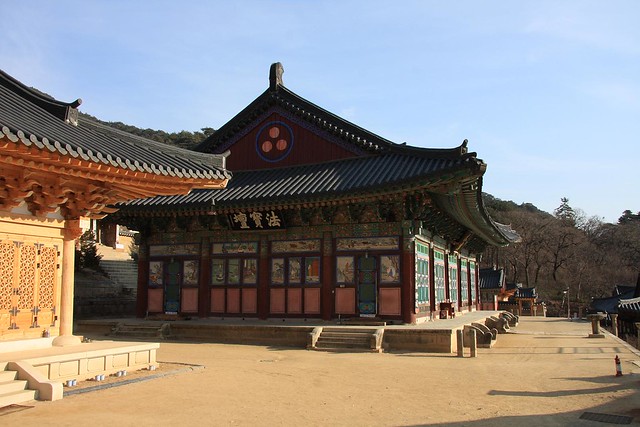Komodo National Park lies along the Sape Strait separating Sumbawa in the east from Flores in the west. To the north is the Flores Sea, and to
the south, the Sawu Sea and Sumba Strait.

The tidal difference between these seas creates very strong currents in the waters of Komodo. These strong currents are rich in nutrients, supporting a marine habitat home to over 1000 fish species, 260 species of reef coral, and marine mammals such as dolphins and whales.
Komodo is known as a good place to spot sharks, turtles, and manta rays. From June to September, the water temperature gets quite low, ranging between 20 and 26 degrees Celsius.
Komodo is also famous as a “warehouse” of unusual sea creatures: leaf fish, frog fish, sea apples, nudibranchs, and various types of rhinopias. To see these rare creatures, you need to spend some time diving south of Pulau Rinca, near Nusa Kode and Cannibal Rock. You can get to these locations by taking a two- to three-hour boat ride from Labuan Bajo, but the most efficient way is to use a “liveaboard” facility.
With its tremendous diversity and abundance of extraordinary marine life, Komodo certainly deserves to be acknowledged as a world heritage site worthy of protection. Komodo is currently a strong contender to be chosen one of the New 7 Wonders of Nature.
Castle Rock and Crystal Rock are two favorite diving spots, located opposite one another. It took us around an hour to get there from Labuan Bajo. Approaching Castle Rock, we could see rocks and reefs protruding through the water surface. This location is a submerged reef north of Pulau Komodo. Various small craft, including rubber boats, were floating around the area, accompanying divers who had arrived from nearby liveaboards.

Our first dive was down to a depth of around 15 meters; we saw dense clusters of colorful corals. The current was swift, but not too strong to swim against. Sea fans attracted our attention; we stopped to photograph them. Huge schools of red and orange anthias played around the corals. It was a challenging dive, but well worth it; the underwater views were spectacularly colorful. It’s no wonder that Castle Rock and Crystal Rock are favorites with divers.
Another popular location is Batu Bolong, recognizable from a cluster of rocks rising from the water’s surface, one with a large hole in it. When diving at this sport, you need to pay careful attention to the currents, which can easily pull you in the wrong direction. In this dive, we were again treated to views of fairly dense coral structures, with no significant noticeable damage. We also encountered an unusual underwater structure with several gaps forming small valleys, though most of the seabed contour is dominated by steep slopes. We came across several whitetip sharks that seemed to be quite interested in us.
The underwater beauty of Komodo has been known since the early 1990, before West Manggarai Regency was formed. Because the infrastructure on the nearby islands of Komodo and Rinca was so basic, the most convenient way to visit Komodo then was to take a “liveaboard” from Bali.

These liveaboard boats take tourists to explore the islands around Komodo and provide complete diving facilities. Since 2003, West Manggarai has been a separate province, split off from Manggarai Regency, and since that time Labuan Bajo, the chief city of West Manggarai, has been developing itself. There are now regular direct flights between Bali and Labuan Bajo, taking a little over an hour from Denpasar. Accommodations have also sprung up along the beaches of Labuan Bajo - everything from simple losmen to star-rated resorts.
In addition to these lodgings, Labuan Bajo has also now become a base for liveaboards, which previously departed only from Bali. Diving facilities have also become quite easy to find; the dive centers work with the liveaboards and resorts to accommodate their guests.
Many restaurants and small bars have also sprung up between the larger buildings in Labuan Bajo.
So now you have two options to explore the underwater beauty of Komodo – liveaboard or land-based.
In the liveaboard option, you stay, eat and perform all your activities on the boat and sail directly to the spots where you want to dive or to enjoy the spectacular views of Komodo. If you like your adventure experience efficient, a liveaboard is the right choice for you. If, on the other hand, you tend to get seasick, or enjoy sightseeing and meeting the local people, land-based facilities are probably more suitable.
Komodo is full of well-known dive spots: Chrystal Rock, Shotgun Channel, Batu Bolong, Pink Beach, Tatawa Besar and Tatawa Kecil, Nusa Kode, Cannibal Rock, Padar, and of course Manta Alley, where you can see schools of manta rays very easily. You can reach most of these locations in one to two-and-a-half hours (one way) by taking a 200-hp speedboat from Labuan Bajo (depending on weather conditions). Tourists entering the Komodo National Park area are required to pay a conservation fee of US$15–US$45 for foreign tourists or Rp 75,000–Rp 225,000 for local tourists, with the amount based on how long you are staying.





















